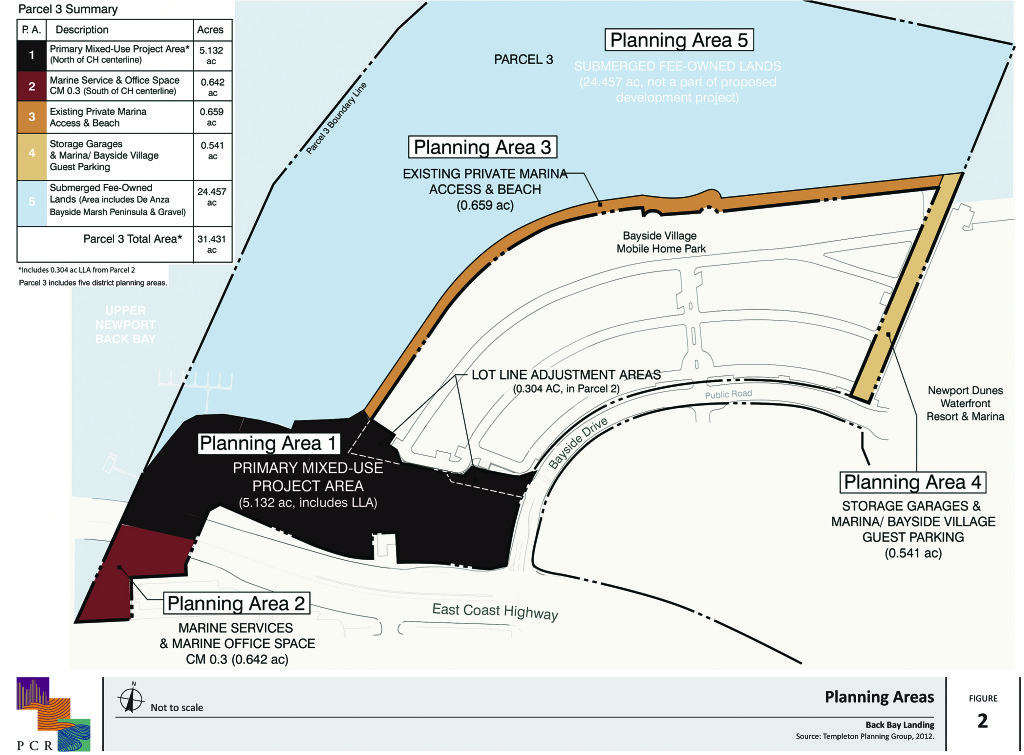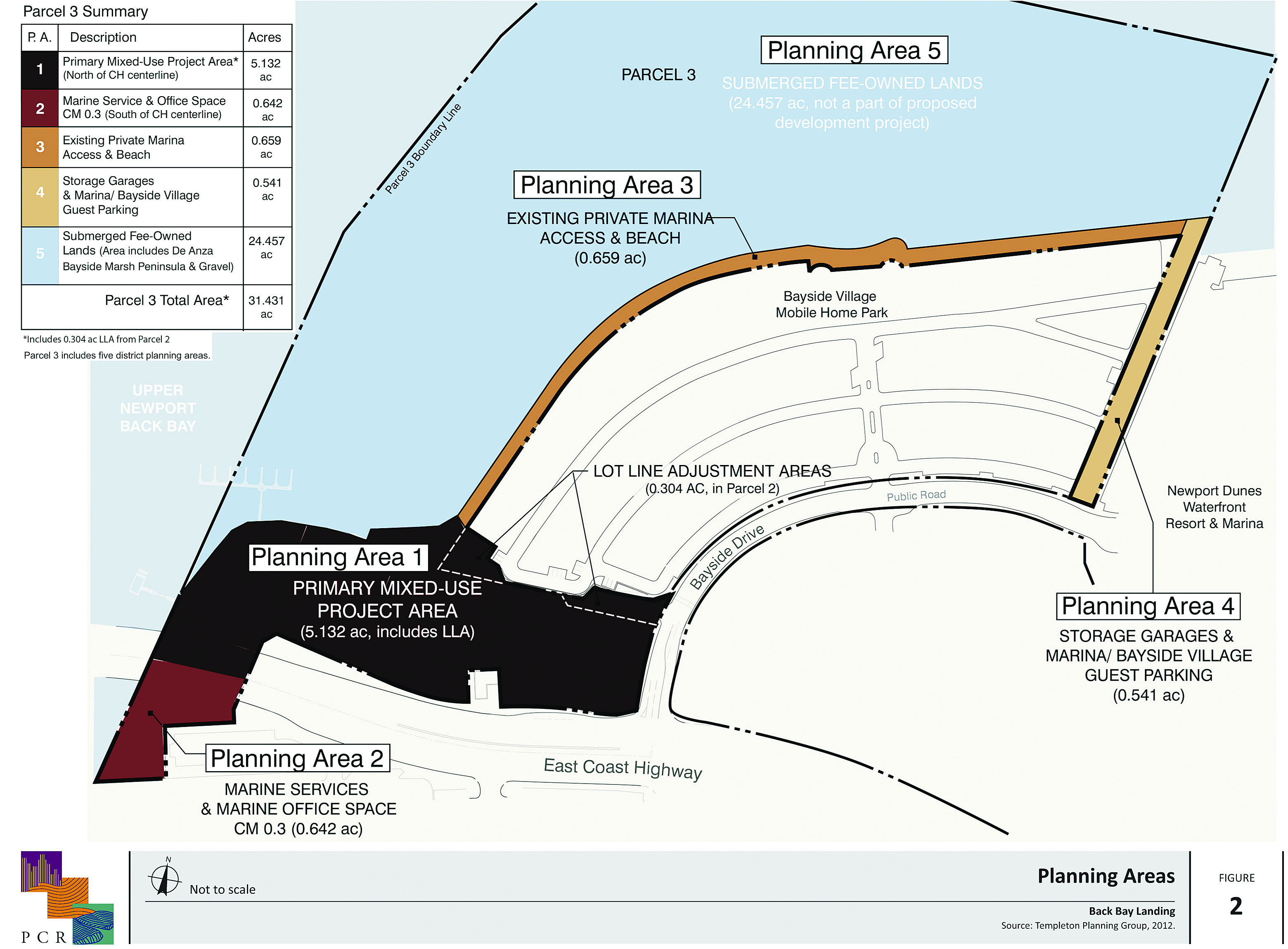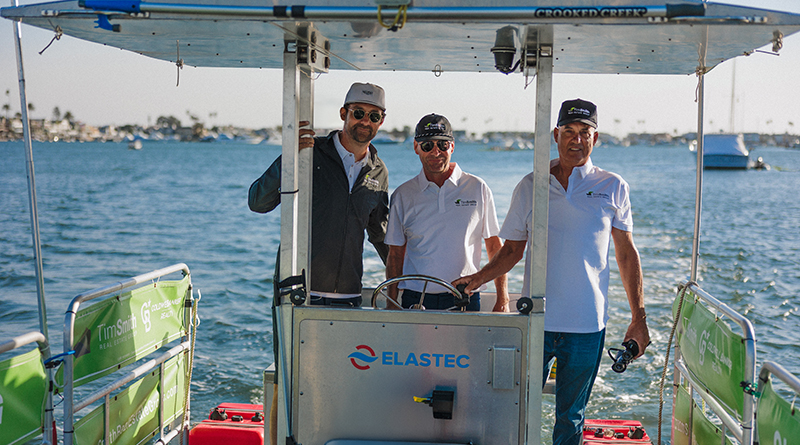Newport Beach— A community-based political action committee recently filed lawsuits against the developer of the Newport Back Bay Landing project, and the City Council in an effort to create “transparency” for the venture’s claimed liabilities.
Stop the Dunes Hotel, an advocacy group spearheaded by Bert Ohlig and Susan Skinner, assert in court documents that “the project is only part of the full project which the Environmental Impact Report did not analyze at all.”
Ohlig, who said the project’s description—to this point—is an “artist’s conceptual drawing,” wants the public to know all the details of the plan before it is approved.
“I expect to be treated fairly and honestly,” Ohlig said. “The project is wall-to-wall and straight up. I appreciate the outreach and so forth, but do what you say and say what you do.”
Michael Galfand, the president of Terra Vista Management which will manage the project, said he believes the lawsuit is “grasping at straws” and called the motion “ridiculous.”
Newport Beach City Council was served on March 27 by the Orange County Superior Court. The petition was originally filed on March 14 and includes lawsuits against the developer, Bayside Village Marina LLC, and the city.
The Back Bay Landing project, a proposed waterfront village preliminarily set on a seven-acre portion of a 31.4 acre parcel located adjacent to upper Newport Bay would be located north of East Coast Highway between Bayside Drive and Bayside Marina and include a restaurant, retail and office space, boat storage and more. The location is adjacent to the Newport Dunes Waterfront Resort and the Bayside Village Mobile Home Park to the east.
The appeal states that the parties violated provisions in the California Environmental Quality Act.
The group, represented by Robert Hawkins, claim developers failed “to provide the public with adequate notice and a full and fair opportunity to be heard and comment on the EIR.” The lawsuit also states that the city “approv(ed) the project without complying with the law,” and “certified the EIR without adequately addressing all comments and without analyzing the full projects and all of its impacts in the environment.”
City Council unanimously approved the EIR Feb. 11, and city officials, who have vehemently refuted the group’s accusation, say alterations were made to the general and coastal land use plans needed for the project to move forward.
“We completely disagree with their claim,” said Leonie Mulvihill, assistant city attorney for the city of Newport Beach. “The lawsuit claims the city didn’t adhere to the EIR. But the city did properly spend the time. We’ll schedule a settlement conference date before April 16. There, we will sit down and talk about each party’s concerns…We would like to get this resolved soon.” In the petition, Ohlig and opponents state the EIR failed to analyze the environmental hazards to such issues as geology and soils, aesthetics, biology, air quality, and the flora and fauna which inhabit the area.
“We think the lawsuit is completely meritless,” Galfand said. “Mr. Hawkins had the statutory time to comment on the EIR and he did not.”
Galfand said he would not speculate on why Hawkins didn’t respond.
John Erskine, the Back Bay Landing Project Land Use attorney, said a public scoping meeting conducted on Oct. 1, 2012, along with a 45-day period of “extensive public review” between Oct. 4 and Nov. 18, 2013, allowed proponents of the project to address all public comments. Additionally, Erskine added that the Planning Commission held a publicly noticed study session on the EIR on Nov. 7, 2013 and a publicly noticed Planning Commission hearing on Back Bay Landing (with a 7-0 approval) on Dec. 19, 2013.
“Neither Mr. Hawkins nor Mr. Ohlig attended or otherwise communicated to the city or the Planning Commission during these comment periods or at any of these hearing,” Erskine said. “(Hawkins) filed his 24-page comment letter the day before the City Council meeting on Feb. 10. That was the first he surfaced.”
The City Attorney responded with a 13-page document the day of the Feb. 11 hearing.
“We worked very, very long and hard to address all of the environmental impact issues that needed to be addressed under the California Environmental Quality Act,” Erskine said.
Ohlig, who was “shocked” with the presentation of the EIR, said when Hawkins contended the project at the hearing, he was met with increased resistance.
“The response to Robert was basically insulting and threatening,” Ohlig said. “Maybe you disagree, but that’s not the way you conduct yourself. At that point, I spoke with him after that meeting, and we basically agreed (to file a suit). It makes it very difficult to believe there would be fairness in the future.”
Galfand said he does not believe the lawsuit will stall the project, which is scheduled to begin in 2016. He adds that Hawkins’ actions are “piecemealing” the project. The group still has to achieve legislation for zoning.
The project, which is three years in the making, has cost “millions of dollars in planning,” according to Gafland. He added that the pros of the construction for the Newport Beach community can’t be overlooked.
“It certainly will be a stimulus to the economy in adding jobs and tax revenues for the city,” Gafland said. “It’s a beautiful project that will bring people to the waterfront.”
Ohlig, who called the project “mass wall-to-wall stucco,” said those travelling down Coast Highway would have their view largely obstructed.
“Newport Harbor is a jewel on Earth…It has a unique character,” Ohlig said. “From a boating perspective, part of this process is to turn it into Marina del Rey. I don’t want to be demeaning to the great people there, but I’m really happy that they are different places.”
The development will reportedly enhance access to the shoreline, and include easier parking, added bike paths and extended viewing corridors.
“What’s the negative impact? We’ve complied with everything,” said Galfand, who also said he met with more than 20 community groups in relation to the venture. “I don’t understand the argument at all.”
He added: “We will vigorously defend the lawsuit to get it thrown out and go after Mr. Hawkins. This project is important and this is just a temporary blip.”
Mulville said the lawsuit could be resolved in anywhere from six to 12 months, but the development will still need approval from the California Coastal Commission.
“We’re going to continue the balance of the approval,” Erskine said. “We anticipate we should get the Coastal Commission sometime by the end of this year. We’re confident we’ll resolve the lawsuit by then.”








